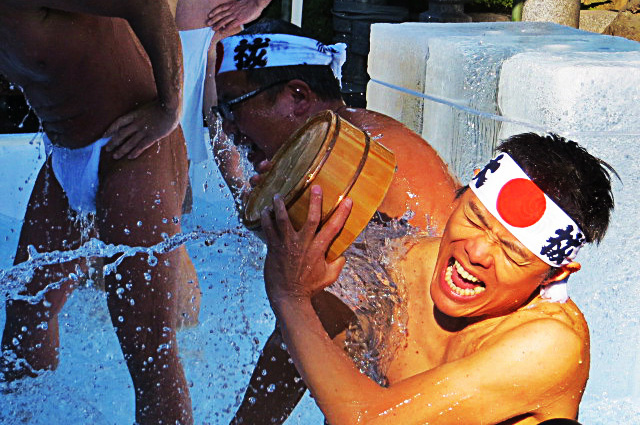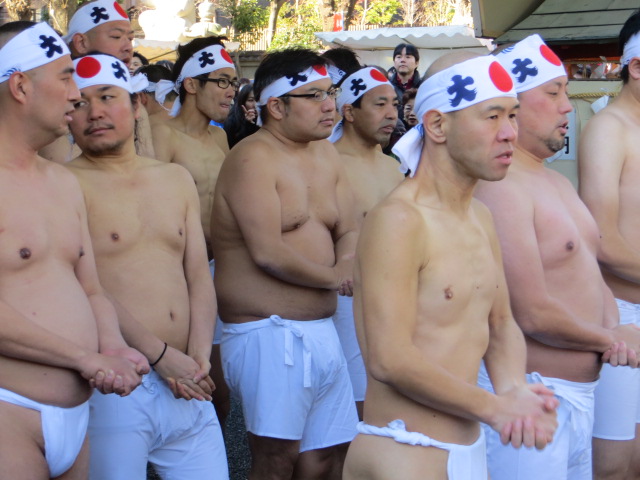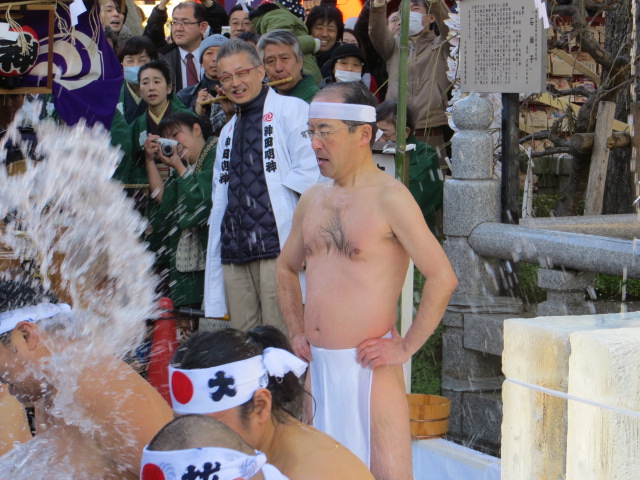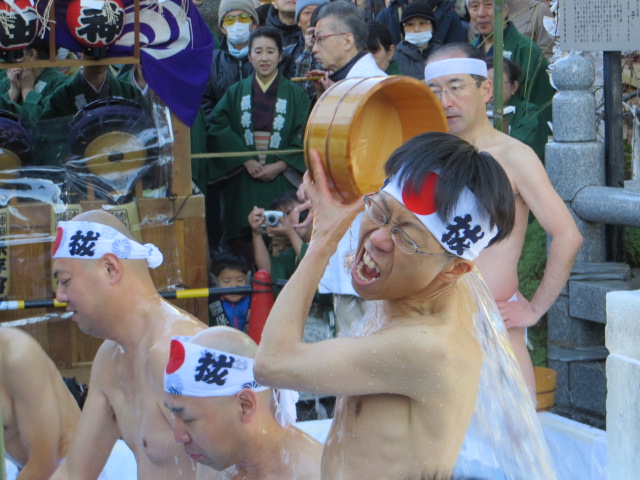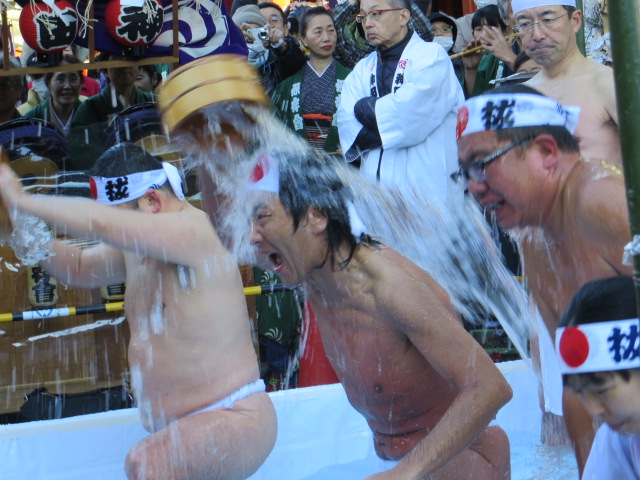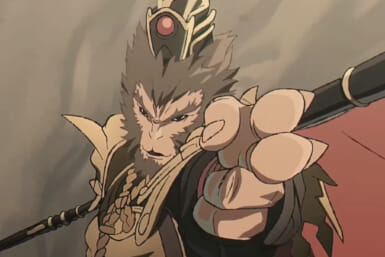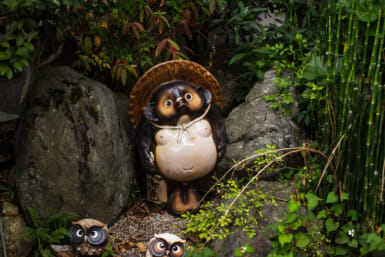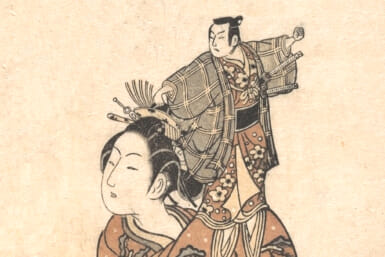It’s a cold January morning in east Tokyo and as soon as I leave Shin-Ochanomizu station I’m cursing myself that I didn’t bring my gloves. Even the dog on the pavement beside me is wearing a coat, though I’m not entirely sure the color suits him. On this particular morning I’m on my way to the nearby Myojin shrine to watch a load of naked men throw buckets of ice water over themselves—It’s moments like this when I wonder what I’m doing with my life.
Text and pictures by Justin Egli
The Daikoku Matsuri happens once a year, and the freezing water ceremony reserved for young people coming of age (20 years old) that year. By enduring sub-zero temperatures, those who participate hope to ward off evil spirits, achieve purification and bring good fortune into adulthood. Inside the temple grounds people are milling about, jovially muttering “Samui! Samui!” (“It’s cold! It’s cold!”) A large queue is already forming outside the temple itself: people waiting patiently to make offerings for the year ahead. To the right of the temple a television crew is setting up, flanked on both sides by old men with cameras just large as those that the TV crew is wielding – hobby photographers you always see at these kinds of events, armed with flasks of hot tea and mini stepladders to help them get a better view of the action.
I squeeze past one of these old timers and position myself in front of what looks like a paddling pool filled with water and a huge block of ice. A gust of wind hits the crowd and the cries of samui samui start up again. At 10 am a group of about 50 men run into the temple grounds wearing nothing but headbands and little pouches to hide their nether regions. I’m shivering, so I can only imagine how they feel: barefoot and naked against the elements with everything on show. After receiving a blessing from the elder of the temple the group does one lap around the grounds in an attempt to warm themselves up. They then position themselves in front of the pool and do a variety of exercises to get their blood flowing.
The leader of the group stands out. He gets into the pool first and doesn’t flinch – ordering the first row of participants to get in along with him. He stands with his arms crossed and barks orders, yelling at them to start. And with that the ritual begins, four people at a time taking turns to repeatedly hurl buckets of ice cold water over themselves while screaming and grimacing and generally looking like they wished they were somewhere else. It’s quite the spectacle, and one’s gaze keeps shifting between the twisted faces of those in the pool and the apprehensive looks of those who are up next. One person isn’t doing it right, so the leader singles him out, ordering him to continue pouring buckets over his head until the leader is satisfied.
The ritual goes on for some time, with those who have already participated having to stand there, dripping wet, and embrace the cold, as generations and generations have before them. And yet, as another example of the contrasts of the old and the new in Tokyo, ultra-modern Akihabara is just a ten-minute walk down the road, filled to the brim with neon, anime and electronics.
There are lots of festivals such as this that happen in the Greater Tokyo area throughout the year. Keep an eye out for the cross-dressing festival (Ofudamaki) in Yokohama; the fire walking festival (Hiwatari Matsuri) at Mount Takao and the sea festival (Hamaorisai Matsuri) in Chigasaski. All are awesome, so please check them out – and don’t forget your camera.

